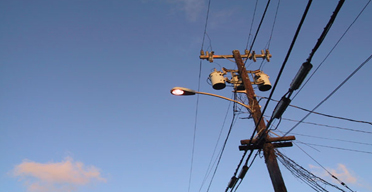Kenya Power Managing Director Joseph Njoroge said the company has already begun laying its underground cable with the first running 2.5 kilometres from a sub-station in the Central Business District to State House.
“We are working on a proposal to undertake the works in Upperhill as a pilot then we move to Industrial area and then Mombasa. In two years time we should be commissioning in Upperhill and in Industrial area and Mombasa maybe in two and a half years,” he said.
The project involves laying a total of 645 kilometres of 11 Kilovolt lines and 1,570 kilometres of low voltage power lines underground in Nairobi, Mombasa and Kisumu.
The high voltage lines will be laid one meter underground while the low voltage cables will be 0.5m underground.
In addition 1,235 pad mounted stations will be grounded in various parts of the three targeted cities.
“The performance of the underground system has less interference and less influence by environmental factors and has better aesthetics,” Njoroge said.
The move, he added, will see a major reduction in power interruptions as well as offer a more reliable delivery of electricity supply.
Njoroge said they expect major savings in unit sales, operational costs and overall convenience of service delivery to customers once the project is complete.
“The return on that investment is in the region of about 18 percent. We should be able to recoup back our investment of Sh20 Billion in about six years. We’re talking of a savings in excess of maybe Sh3 billion a year,” he said.
Sharing infrastructure projects
However, concern from various stakeholders in the water, roads and telecom sectors fearing interruption of service delivery and requesting more time in the planning phase of the project, could see some delays in the project.
The power company engaged players from the Nairobi City Council, Kenya Pipeline Company, Kenya Urban Roads Authority, Ministry of Energy and the Nairobi Water and Sewerage Company among others.
Nairobi Provincial Commissioner Njoroge Ndirangu, who was present during Wednesday’s stakeholder meeting, said the different sectors would have to find a way of planning their various projects alongside each other.
Infrastructure development has proven to be a nightmare for telecoms who often suffer cable cuts due to either vandalism, theft and road construction.
Failure to share maps of infrastructure layouts among government agencies, private companies and contractors has caused for confusion when construction projects overlap or disrupt service delivery across sectors.
Ultimately, Ndirangu said in order to avert such issues, the harmonisation of laws to establish one policy on infrastructure development will be paramount in ensuring projects can run concurrently regardless of the type of service they offer to the public.
For instance, in Sweden the City of Stockholm runs the Stokab system, founded in 1994 to promote economic growth and stimulate the telecom market and ICT development in the Stockholm region.
In essence Stokab provides a public service on commercial terms with its core tasks being to build, operate and maintain the fibre optic communication network in Stockholm and eventually lease out fibre optic connections.
The company is competitively neutral, providing a network open to all service providers on equal terms.
Njoroge said sector players would have to work together in the future to achieve the Vision 2030 goals, most of which are hinged on infrastructure development.
Kenya Power has an ambitious goal of giving 50 percent of Kenyans access to electricity by 2020, which Njoroge insisted was achievable with the positive year on year customer growth the company has been experiencing.
“The rate which we have targeted to be growing the electricity connection is about 300,000 customers every year. Last year, we did 250,000 and in previous years we did 200,000,” Njoroge explained.
An estimated 14 million Kenyans currently have access to electricity roughly 30 percent of the population.




































